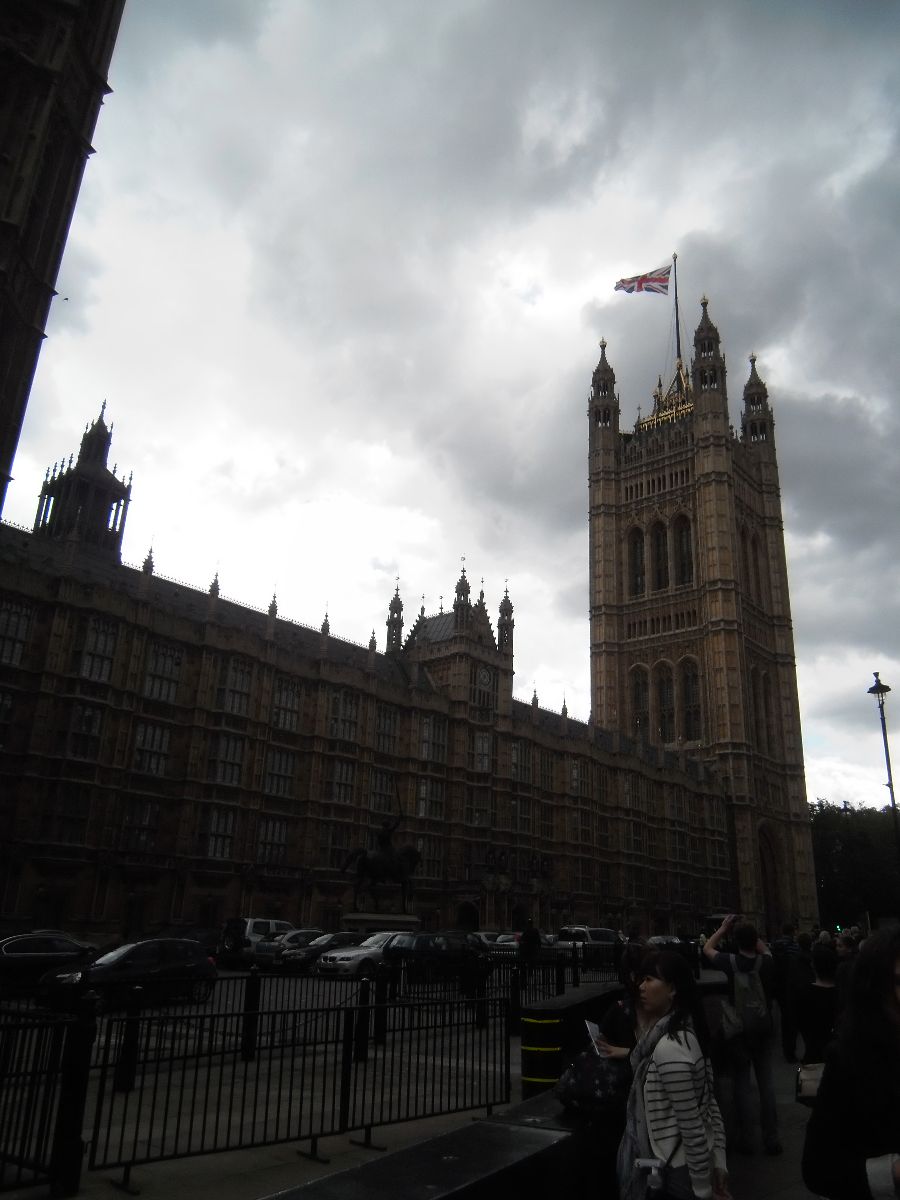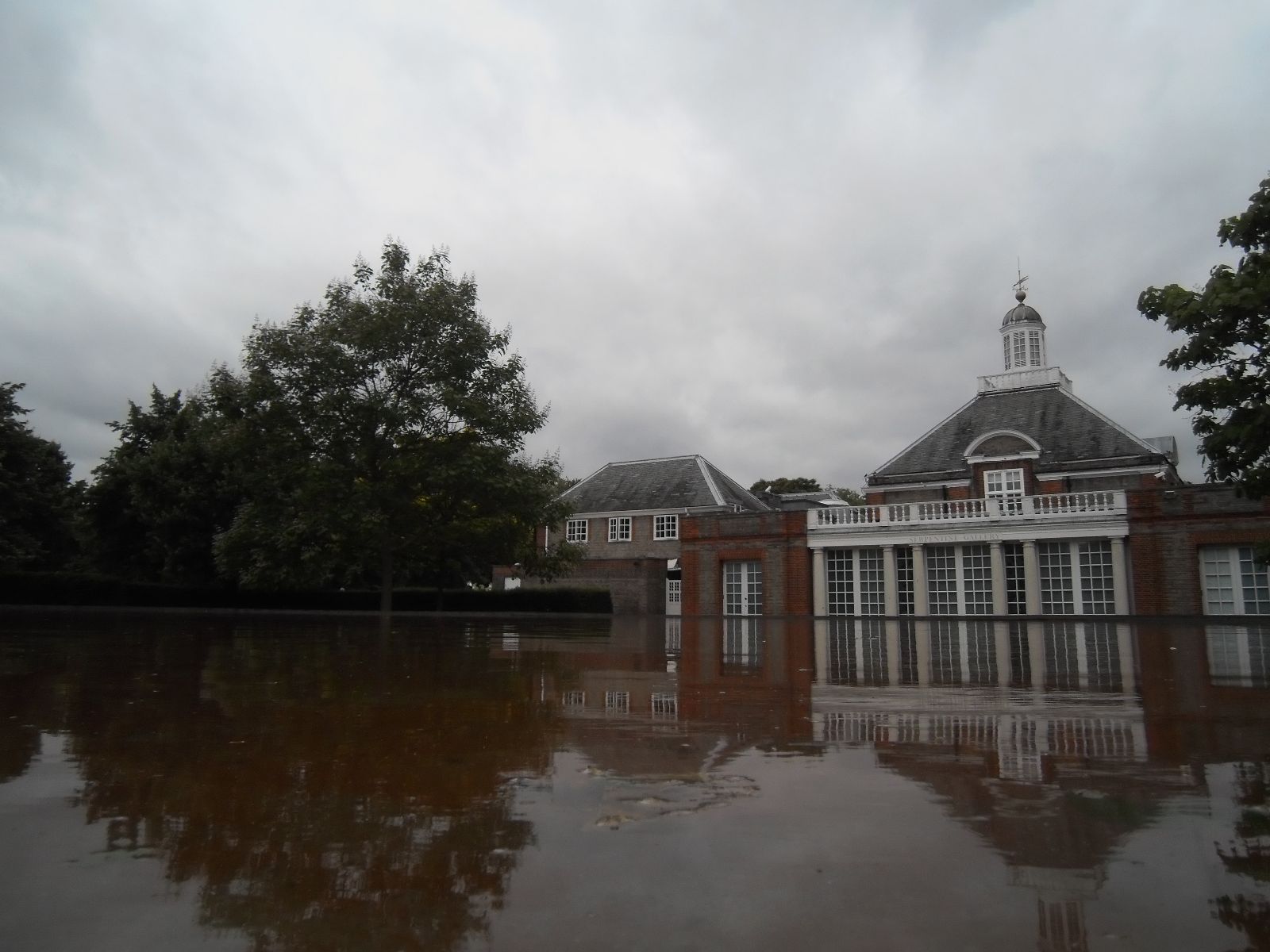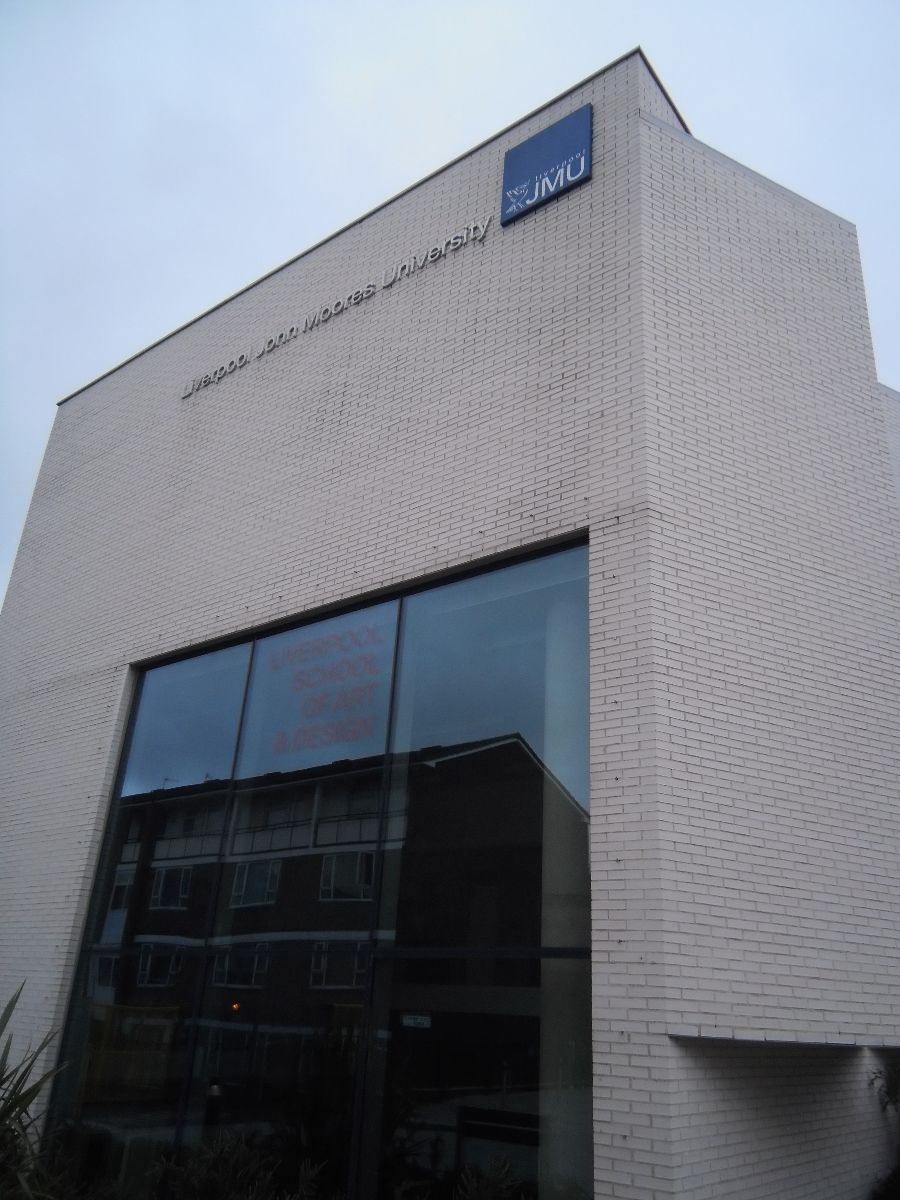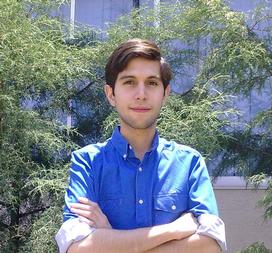Travel Fellowship Report: Víctor Alejandro Oseguera AbarcaExploration of British Public Space and the 7th National Conference on Arts in Society, July 10-26 2012Britain has fascinated me since I can remember. There is an undeniable appeal about it that is so elegant and so up-to-date that when I thought about the possibility of winning the Travel Fellowship, it was my first opportunity to go there and finally see if everything that’s said about it is true. Turns out there are no sufficient words to describe how beautiful and welcoming the United Kingdom is. Part 1: London. First stop on the journey was London. Its ever-grey climate creates the perfect background for an incredible spectacle of architecture that is complimented by people’s energy flowing rapidly from one place to the other; the sounds of cars accompanied by red glimpses of their icons, such as the phone booth and the double-decker bus, made the whole experience that much more special.
There I was in the middle of Trafalgar Square, after twelve hours of flights, when I experienced the first –and one of the strongest- of all the architectural impacts I was going to have during the trip: as I was walking towards the National Gallery (an exceptionally refined structure that constitutes the definition of a successful public building), I had a quick look to the south and got a glance at the imposing Victoria Tower at the Palace of Westminster, Union Jack Flag waving on top and all; a few steps forward, and it was out of sight, but the black and gold of its roof will always be imprinted in my memory, and so will Westminster Abbey with its white west towers and its impeccably detailed rib vaults, the inner and outer beauty of Saint Paul’s Cathedral and the awe-inspiring height of The Shard, among many other landmarks that provide London with an ever-changing image that could be described as architecturally dreamy. Since the main purpose of this part of the voyage was the appreciation of public Londoner architecture, visits to as many museums and gardens as I could were mandatory. I definitely could grasp, even in the relatively short amount of time I spent there, that there is a sense of respect and attraction for open spaces –most of the time, free to access. Thus, there is no need to pay a great amount of money to admire a beloved and highly recognizable work of art while wandering around the magnificent installations of the Tate Modern or Tate Britain or observe every mighty brushstroke at the National Portrait Gallery: all of London’s public buildings should come with a ‘Free Inspiration Here!’ sign attached to their façade. Whether it is window shopping alongside a great avenue, sitting on a bench to eat a snack or running to try to make the most of that timid ray of sun that has found its way through the cloudy skies into one of London’s enormous parks -that gives provisional escape from the urban mayhem that might overwhelm more than one- I really do not believe people can have two similar days in the city: The cultural offer is amazing and there are times when I couldn’t exactly tell if I was strolling down a street or a giant playground.
Crossing the millennium footbridge, enjoying a delicious salted caramel ice cream under the bridge at Borough Market, waiting for the pedestrian green light to go over a road, rushing downstairs to catch the next tube, they’re all expressions of a city belonging to everyone, and of everyone belonging to the city, a place where such an ancient building as the White Tower in the complex of the Tower of London is not afraid to share the skyline stardom with The Gherkin at 30 St. Mary Axe: a bountiful city.
Continuing the exploration of public architecture of great value, I found myself walking through Kensington Gardens, reading and following its maps until I found the Serpentine Gallery Pavilion, this year designed by Herzog & DeMeuron in collaboration with Ai Wei Wei. Despite its ephemeral essence, the quality of the pavilion is outstanding, generating an integrated experience, mixing the sensuous smell of cork –of which most of its architectural elements are carved from- with sinuous shapes that make a statement of the grandeur of demureness and understanding of the emplacement. The perfect shelter for the rain -whose water-covered rooftop was the impeccable mirror for a slightly-conceited gallery to watch its reflection- was also the ideal spot to have some coffee or a chat, as well as a safe environment in which kids could play so freely and carelessly it made me hanker for my future architecture to evoke even a tiny portion of what I experienced there. I realized that my country deserves this kind of architecture, places for slowing down after a grueling journey of hard work: it’s a task that excites me, that actually makes me feel like the future is in my hands: dreaming has never hurt anybody, but I have to try to live one day at a time. The thing I loved about London is that the city’s age, coupled with its openmindedness, permits to find all sorts of architecture that could be difficult to find in Mexico. Gothic buildings next to deconstructive interventions give the town a flavor whose uniqueness is not to be underappreciated; that’s why I hunted some of Zaha Hadid’s work, in order to live such beautiful spaces as the Evelyn Grace Academy in Brixton or the Roca Gallery in Chelsea. I also tried to embrace as much as I could of the spatial understanding of Sir Norman Foster’s buildings, places that demonstrate that a singularly-designed building does not have to fight the notion of community and social ambiance. I did everything I wanted: I went to the movies, to the theater, went on a boat across the Thames and the Industrial Canal, visited the library, entered all sorts of shops and I can’t say I have any regrets about my stay in London, as everything was perfect. In less time than I thought, I was re-packing my suitcase and on my way to Euston Station: The second and final part of the journey was ahead. Part 2: Experiencing Liverpool. Within a two hour-long train travel, I got to Liverpool. I reckon I was not sure on what to expect from it, so getting off the train cab and crossing Lime Street Station throughout the exterior was quite an experience: although Liverpool has an undistinguishable English quality to it, I felt I had fallen into a completely different universe.
Probably the biggest difference between London and Liverpool resides in the cities’ extensions; Liverpool is, indeed, a very walkable city, whose topography permits to have multiple perceptions of the same urban center. The waterfront constitutes an amazingly picturesque ambiance, mixing the traditional Liverpudlian landmarks with some bold pieces of architecture that just convey the city with an astonishing, overly-stimulating dialogue of old and new that is certainly risky and, nevertheless, impeccably well equilibrated. As I’ve come to discover in these years as an architecture student, there is no better way to appreciate architectural evolution than having a city that shows itself as a tasteful catalogue of different types of architecture for people to compare and, ultimately, choose a preference. I actually believe that this contributes hugely in people’s overall perception and sense of identity towards the city they live in and, consequently, is an aide to the correct appropriation of public space; Liverpool offers a wide range of public architecture in diverse typologies that aim to satisfy the needs of every single kind of user there might be. Both London and Liverpool have an intense consciousness of their public architecture, but they live them in totally different manners. London’s ‘megacity’ status grants a lifestyle that is driven by constant displacements at great speeds. This hectic vibe provides the city with an utterly contagious and never-ending energy that can be appreciated throughout every single one of the public pieces of architecture around town; Meanwhile in Liverpool, the city’s spirit is completely different and laid-back (people were so warm and chatty!), so it was incredibly refreshing to walk along such a fearless city and get to watch people interacting with each other and with their environment: there is no doubt that there is a correct appropriation of the pubic space. Liverpool is home to two cathedrals, each one waiting for you at one end of Hope Street; The Metropolitan one has a daring architectonic language. I found myself slowly rambling around its circular plan, experiencing the powerful organ that can make you feel the music further beyond what your ears can hear, perceiving how it vibrated deep within my chest. The Anglican Cathedral offers a gothic-revival style that holds some of the most impressive glasswork I have ever seen. Part 3: The Conference.
Once I had walked through the city just enough to make a mental map, as well as develop an idea and an opinion, the main purpose of the whole journey was about to begin: The Seventh International Conference on the Arts in Society was held at the Art and Design Academy of John Moores University of Liverpool: a building that was only a few blocks away from where I stayed, and an institution that really surprised me (once I was inside the building I took the time to read a brochure about the design courses it holds) with their approach to the matter of developing the student’s skills in order to generate conscious creators with an avant-garde approach to their solutions. That experience raised certain awareness in me of the school as the ideal setting for what was about to happen: a large-scale conversation between art producers, critics and enthusiasts, to find out what the effects of social art really are in our everyday life. The turnout could not have been more heterogeneous: I found myself surrounded by people from all over the world, most of them holding name tags with an outstanding amount of degrees on them. However, the atmosphere was incredibly light, fluid and eager to participate in the ignition of conversations and discussions. After a welcoming presentation, we headed for roundtables for smaller groups, each one focusing on a particular subject. My group discussed Arts Theory and Criticism, and was attended by a wide range of personalities, each trying to defend their point of view about what social art has become over the past years. The discussion consisted of everyone speaking up about our particular perspective on what makes something really be art, and if there is such a thing as competency within an artistic environment. Later, the conversation became about cities as landscapes for social art and luckily, every one of us realized the importance of public space within the dynamics of the city of Liverpool itself. However, there were different perspectives on the matter of how people’s interaction with the architectonic interventions in the city was being conducted; Whilst some of the colleagues praised the importance Liverpool gives to commercial architecture as an admirable solution towards the problem of shortage of public space, myself and others stated that public architecture that is merely intended to be a space for consumption has the risk of becoming a non-place, as it is quickly settling to come to be a transitional space rather than a profitable one. One’s perception of the actual architectural space is reduced to a minimum when the main feature of the constitution of the building is not about its flux or scale, but rather what object the retailer is trying to sell. Therefore, there is –absolutely- not an appreciation of tectonic detail and Architecture suddenly turns out to be meaningless. Then and there we all realized that what could possibly revert this effect is, indeed, Public and Social art; Just to clarify this with an example: in Liverpool’s shopping district there were a series of pianos which people were allowed to use to either experiment, practice or give a mini-concert. The consumerist momentum gets -although sometimes only shortly- interrupted by this noble act, and people can actually enjoy the environment, the music and the presence of other people. Our conclusion was that this presence of art –in the form of music, sculpture, installation and strategic architecture- certainly links us to the public space and generates a complete enjoyable experience for the user, which is, at least in my case as an architecture student, one of the major goals I plan on my work to have. But conversations didn’t stop there. It was time to hear the paper presentations, after all, the core of the conference. There were expositions about things so interesting and so unique I never thought could be related to social art and yet so engaging I can’t imagine the conference without them; Just to mention a few of them, there were people explaining, promoting and encouraging such diverse activities as mathematical functions-inspired knitting; poetry with sign language; the sentimentality of artistic urban encounters,; filmmaking as a symbiotic inspiration for architecture and vice versa; architecture being based upon (and ultimately returning to) naturalism as a way to get a divine connection; and many more. The more presentations I attended, the less nervous I became towards introducing my own paper, because there was nothing more refreshing than the excellent feedback given at the end of the expositions: I was eager to see who had something to enrich what I already had researched about Kitsch; At approximately 11:05 in the morning of Tuesday, July 24th, inside room 2, I started speaking about my paper, entitled ‘Kitschy Kitsch: A Way To Generate Social Identity Through Art’. I started to talk about the historical origin of the word and its meaning, as well as what it represents for many authors and art critics; later, I continued talking about its insertion into authentic works of art and how this affects people’s perception into what is supposed to be the role of art in our society. It had a high content of theoretical and philosophical visions with regards to the matter and I’m really glad I could find a forum to speak up about this topic that deeply interests me. My main theory is that this form of pseudo art, first originated and recognized in the middle-- and as a consequence of the romanticism --of the nineteenth century, has had certain effects inside our collective unconscious, becoming a link between artistic ignorance and the appreciation of authentic artistic value. When artists use kitsch elements to achieve aesthetic equilibrium in their work, they also start a phenomenon of self-awareness: most of them want their work to have a meaning and convey a message and the application of Kitsch stratagems can act as a hook towards the audience who, throughout the years, has developed an innate preference for such particular objects. Architects, as Art producers, can profit by pointing out and applying the Kitsch strategies (Maximization, material illusion, saturation, repetition, transposition, decontextualization, fetishization and iconic creation) in their own works in order to generate objects that are attractive, but not only for hedonistic or consumerist purposes, but to generate public places that can be correctly appropriated.
The dynamic of the conference permitted an interspersed inclusion of plenary speaks from renowned artists and art-promoters such as Sally Tallant, Beatriz García, Suzanne Lacy and Andy Miah. Throughout their presentations, I slowly began to realize that if there is such a thing as a line separating social activism and social art, the tendency is to try and expunge it completely; the subtext of the whole conference was to act out: identify a social problem and try to solve it through art; there are times when political ties do not permit its full achievement, but there are others that really become statements of people bettering their society, therefore provoking us to ameliorate ours. In the conference I met some of the most interesting people I’ve ever known, friendships that I will –with a pinch of luck- preserve for the rest of my life, whose energy, talent and knowledge make me want to become a better person. When once asked to make a personal definition on the word ‘beauty’, I stated it was something that you could not take your eyes off of. According to what I believe, beauty was everywhere I turned to in England: it was in Liverpool’s Royal Liver Building and in London’s Elizabeth Tower, in the mixture of brick walls and neon lights. This travel helped me to understand that cities have a life of their own, and function despite whatever problems they might run into. Solutions? We should come up with hundreds of them; after all, our role as architects on promoting the inclusion of architecture for the public good is only as significant as that of citizens who, ultimately, are going to experience it. Additional Help and InformationAre you in need of assistance? Please email info@berkeleyprize.org. |
|







